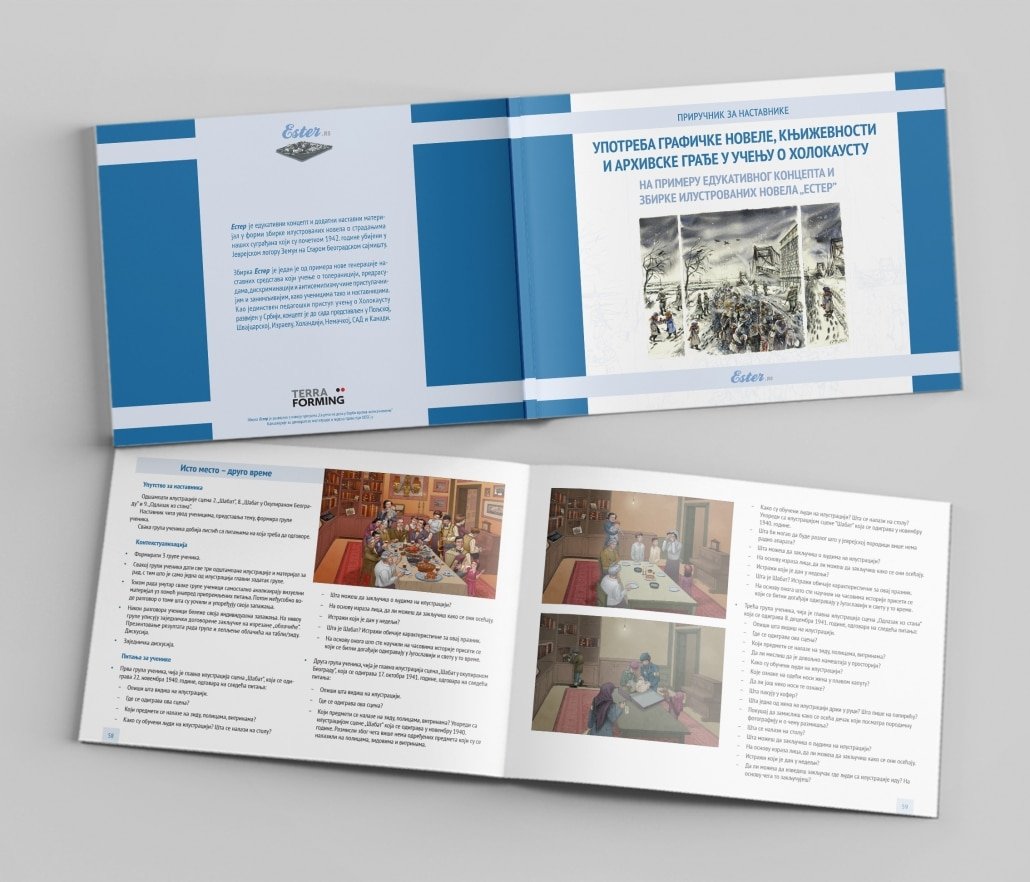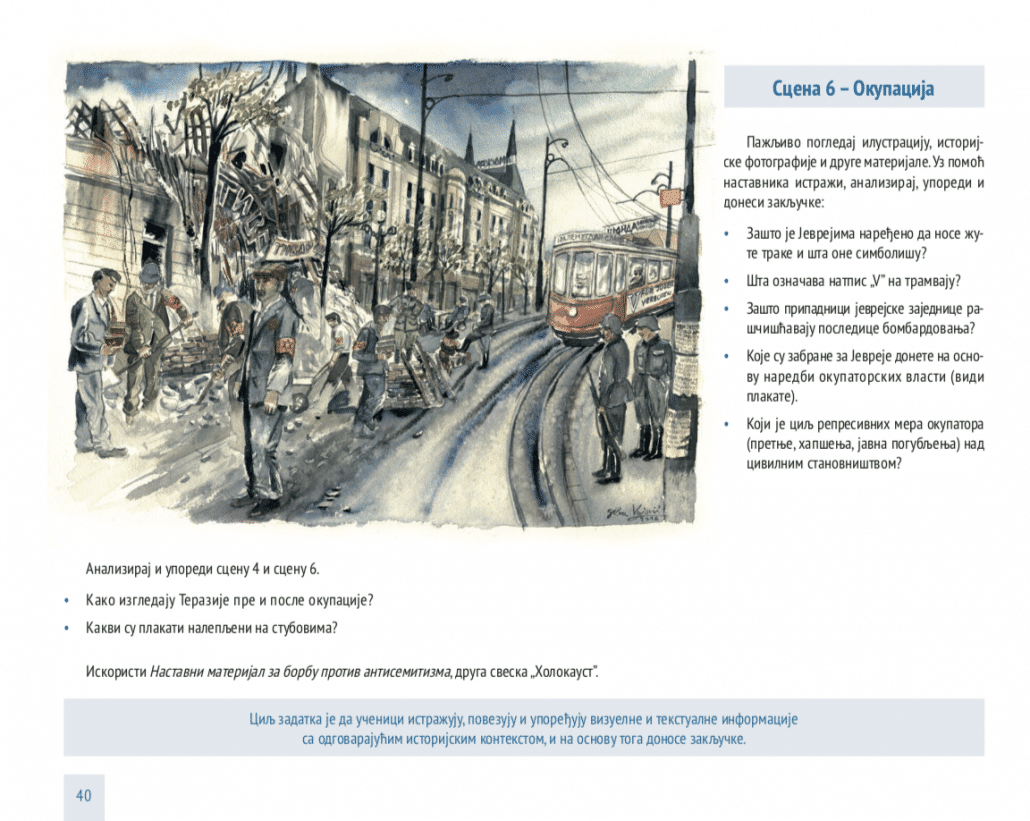Graphic novel, literature and archival materials in education about the Holocaust
Manual for educators based on the educational concept and the collection of graphic novels “Ester”
Terms of use
![]()
This work is licensed under a Creative Commons Attribution-NonCommercial-NoDerivatives 4.0 International License.
Ester is a collection of graphic novels and a teaching material, its most important part being a series of dramatized stories about the Jewish victims killed in the Jewish Camp at Sajmište in Belgrade (Judenlager Semlin) in the beginning of 1942. The stories focus on young victims and their families, their pre-war life, the life under the German occupation and during the Holocaust. They are based on the true historical events and characters. The concept is developed by Misko Stanisic, Тerraforming, and produced in a cooperation with an international team consisting of expert historians, teachers, experts for the Jewish culture and tradition, Holocaust survivors, as well as a group of illustrators from Serbia and the Netherlands. Ester was developed with the support of the ODIHR’s project ”Words into Action to Combat Antisemitism” in 2016.
In 2018 we decided to create a Manual that will, in addition to school teachers, target librarians and archivists, and other potential multipliers, such as NGO activists and the local Jewish communities. It was to be developed in such way that it can serve as a guide for addressing a range of challenges and dilemmas when using graphic novels, literary texts and archival resources for teaching and learning about the Holocaust and addressing antisemitism, not only when using the educational material “Ester”, but also for other similar and fitting resources. For that reason Terraforming summoned a team of experts that could cover these topics from various angles and using different approaches: historians, teachers, archivists, librarians and didactics experts.
The 64-pages Manual consist of two parts. First part covers a broad range of challenges and dilemmas when using graphic novel, literature and archival resources for teaching and learning about the Holocaust and addressing antisemitism. While consequently using “Ester” as example, this first part of the Manual will also offer some practical solutions and serve as guideline for use of any suitable graphic novel, literary texts or/and archival materials in teaching about the Holocaust and antisemitism.
The second part of the Manual covers concrete practical examples of educational methodologies, workshop scenarios and types of tasks prepared for the students in the frames of the “Ester” concept. Its main purpose is to explain the basic principles behind various pedagogical methodologies and learning scenarios, so that teachers can use these, and all other suggested tasks presented online on Ester.rs
The Manual is titled: Use of Graphic Novel, Literature and Archival Materials in Teaching and Learning about the Holocaust on the Example of the Educational Concept and Collection of Graphic Novels “Ester”
The publication was part of efforts with aim to sustainably incorporate teaching material Ester into training programs for teachers, librarians and archivists in Serbia in cooperation with the serbian branch of EUROCLIO, and serbian teacher-, library- and archive networks.
Editor
Misko Stanisic, Director of Terraforming, Novi Sad;
Contributors
Marko Suica PhD, Associate Professor at the History Department of the Faculty of Philosophy, Belgrade University;
Vasilije Milnovic PhD, Head of Scientific Center, University Library, Belgrade;
Milan Koljanin PhD, Senior Researcher, Institute for Contemporary History, Belgrade;
Aleksandar Todosijevic, History Teacher, President of UDI EUROCLIO, Belgrade;
Natasa Kostic, History Teacher, UDI EUROCLIO, Mladenovac;
Tijana Kovcic, Archivist, Historical Archives of Belgrade;
Biljana Albahari, Senior Bibliographer, National Library of Serbia;
Bojana Andjelic, PhD student, Serbian Language and Literature Teacher, Novi Sad;






